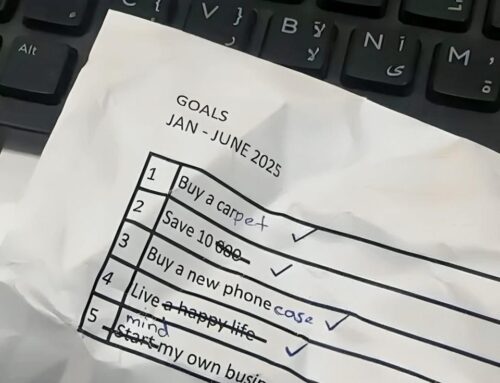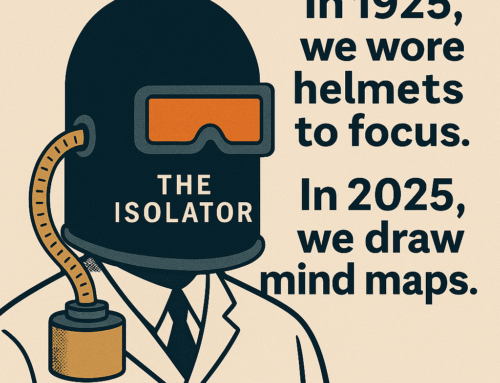In the fast-paced world we live in, managing personal work effectively is crucial to maintaining productivity and achieving our goals. While there are numerous tools and strategies available to help us stay organized, one approach that often goes overlooked is conferencing with oneself.
Yes, you read that right – engaging in a conversation with yourself can be a powerful technique for managing personal work and enhancing overall productivity. While Scrum meetings, also known as daily stand-ups, are essential for agile project management within the Scrum framework, they primarily focus on team collaboration. However, once an individual is at their desk with their assignments, they still need a micro-level Scrum for their own tasks. This is where a session of conferencing with oneself can be incredibly valuable.
In our eagerness to solve complex problems, we often turn to our best friend or benefactor for advice, but we frequently overlook the most trustworthy benefactor of all—ourselves!
In this blog post, we’ll explore how conferencing with self can revolutionize your work management and provide practical tips on how to do it.
These are some common topics for which engaging in a self-conference can be beneficial:
- Creating or updating a work breakdown structure for your new project: By conferencing with yourself, you can meticulously analyze the project requirements, break them down into smaller tasks, and establish a clear plan of action.
- Identifying gaps in planned solutions: Through self-conferencing, you can critically assess the solutions or strategies you have planned for a particular problem or project. This allows you to identify any gaps or areas that need further attention or refinement.
- Prioritizing tasks for the day: Engaging in a conversation with yourself enables you to review your tasks and responsibilities for the day. By considering their importance, deadlines, and dependencies, you can prioritize them effectively to maximize productivity. This method surpasses the approach of impulsively jumping into a task without proper evaluation and planning.
- Making informed decisions on complex problems: When faced with complex problems or challenging decisions, conferencing with yourself can provide an opportunity for careful deliberation. By discussing different perspectives, weighing pros and cons, and considering various factors, you can make more informed decisions.
What are the Benefits of Conferencing with Self?
- Clarity of Thoughts: Engaging in a dialogue with yourself allows you to articulate your thoughts, concerns, and ideas more clearly. When you verbalize your objectives and challenges, you gain a fresh perspective on your work.
- Improved Focus: Conferencing with self helps you eliminate distractions and maintain focus. By discussing your work with yourself, you can create an open environment that allows for uninterrupted thinking and problem-solving, leading to increased efficiency and output.
- Enhanced Problem Solving: When facing a complex task or challenge, engaging in a self-conference can stimulate your creativity and facilitate innovative problem-solving. By engaging in a structured conversation with yourself, you can explore different perspectives, generate new ideas, and develop effective strategies to overcome obstacles.
How do you conference with Self?
- Set the Stage: Find a quiet and comfortable space where you can think without interruptions. This could be a dedicated room, a cozy corner in your home, or even a peaceful outdoor location. Eliminate distractions by turning off your phone, closing unnecessary tabs on your computer, and creating a conducive environment for self-reflection.
- Prepare an Agenda: Before starting the conference, create an agenda or list of topics you want to address. This will help you stay organized and ensure you cover all the important aspects of your personal work. Whether it’s setting goals, analyzing progress, or brainstorming ideas, having a clear agenda will provide structure to your self-conference.
- Engage in Dialogue: Ask yourself open-ended questions and respond thoughtfully, considering multiple perspectives. Take notes during the conversation to capture insights, ideas, and action items that emerge.
What kind of tool set do you need?
A mind map tool is an incredibly useful resource for stimulating structured thinking and generating ideas in a systematic and comprehensive manner. It allows you to visually organize and connect various concepts, helping to unlock creativity and enhance productivity.
To maximize the benefits of mind mapping, it is recommended to maintain a collection of mind maps, one for each of your projects and the different roles you perform. By creating dedicated mind maps for specific projects, you can capture and organize relevant information, outline key tasks, and establish connections between different elements. Similarly, having separate mind maps for each role you undertake allows you to maintain a clear overview of responsibilities, goals, and ideas associated with that particular role.
Embrace this unique method of self-reflection and see how it transforms your personal work management, leading to greater success and fulfillment in your professional and personal endeavors.
Subscribe to my newsletter, to get tips like this and more, directly in your inbox!
(Originally published in Times of India on July 15, 2023)






